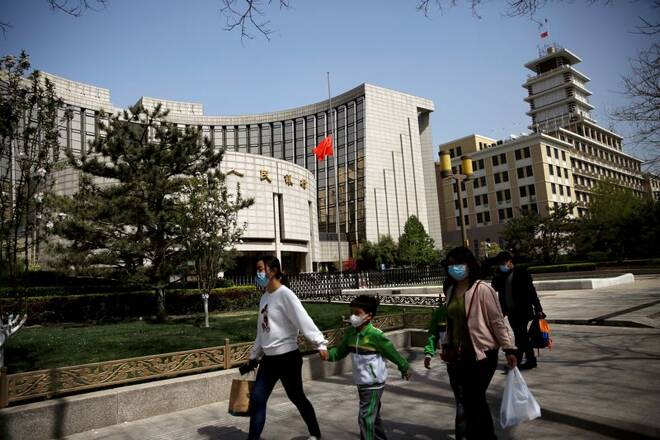Advertisement
Advertisement
China cuts lending benchmark, market sees more easing in 2022
By:
SHANGHAI (Reuters) - China cut its lending benchmark loan prime rate (LPR) for the first time in 20 months at its December fixing on Monday, largely in line with market expectations.
SHANGHAI (Reuters) – China cut its lending benchmark loan prime rate (LPR) for the first time in 20 months on Monday, in a bid to prop up growth in the slowing economy, although it remains wary of loosening conditions in the country’s highly leveraged property market.
The one-year LPR was lowered by 5 basis points to 3.80% from 3.85% previously, while the five-year LPR remained at 4.65%.
The reduction marks the first LPR cut since April 2020.
Twenty-nine out of the 40 traders and economists polled by Reuters last week predicted cuts in LPR.
Most new and outstanding loans in China are based on the one-year LPR while the five-year rate influences the pricing of home mortgages.
“The cut reinforces our view that authorities are increasingly open to cutting interest rates amid looming economic headwinds,” said Xing Zhaopeng, senior China strategist at ANZ.
However, he noted the decision to keep the five-year rate unchanged showed Beijing preferred “not to use the property sector to stimulate economic growth.”
Some analysts said the central bank’s two reserve requirement ratio (RRR) cuts this year have allowed institutions to lower their costs of lending, with the two cuts saving banks up to 28 billion yuan ($4.39 billion), according to Goldman Sachs’ estimates.
Global divergence
While Beijing’s move to lower the LPR was widely expected, it highlights China’s monetary policy divergence from other major central banks, which are set to raise interest rates.
Some analysts expect Beijing could ease further to arrest the economic slowdown, although they remain divided over the easing trajectory.
A slew of recent economic indicators, including retail sales and investment growth, point to a slowing economy, while a regulatory clampdown on the tech sector has dampened investor sentiment. New curbs to fight rising COVID-19 cases could further pressure growth.
“We expect a further 45 bp of cuts to the one-year LPR during 2022,” Mark Williams, chief Asia economist at Capital Economics, said in a note.
ANZ’s Xing expects another RRR cut in early 2022 amid mounting credit risks in the property sector.
Yan Se, chief economist at Founder Securities, said China’s central bank lowered its interest rates by a smaller margin than global peers during the height of the pandemic last year, giving it room for additional easing now.
He expects Beijing to lower interest rates on the central bank’s medium-term lending facility (MLF) by 10 bps in the first quarter of 2022, followed by more LPR reductions.
However, Li Wei, senior economist for China at Standard Chartered, expects no broad-based RRR cut or policy rate cuts in 2022.
“We maintain our call for no change in the seven-day reverse repo rate and the one-year MLF rate in 2022, as major central banks are expected to tighten monetary policy and China’s CPI should trend higher on PPI passthrough and rising pork inflation,” Li said.
($1 = 6.3781 Chinese yuan)
(Reporting by Winni Zhou and Andrew Galbraith; Editing by Muralikumar Anantharaman and Sam Holmes)
About the Author
Reuterscontributor
Reuters, the news and media division of Thomson Reuters, is the world’s largest international multimedia news provider reaching more than one billion people every day. Reuters provides trusted business, financial, national, and international news to professionals via Thomson Reuters desktops, the world's media organizations, and directly to consumers at Reuters.com and via Reuters TV. Learn more about Thomson Reuters products:
Latest news and analysis
Advertisement
